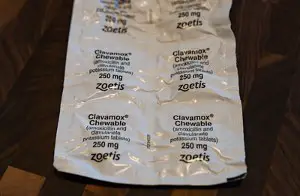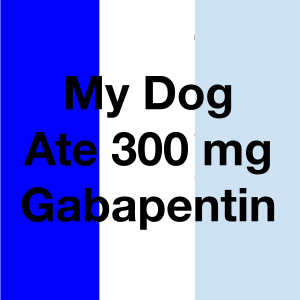
It can be very stressful to give medication to your dog. Their anatomy is quite different, and we usually don’t know what to expect.
It is no less stressful for your dog, who can’t figure out what’s going on. Sometimes, being mischievous as they are, dogs can eat our meds when we’re not looking; which is honestly a nightmare scenario for us.
A lot of the medicines that are completely harmless to us can be fatal for our dogs.
As a responsible dog parent, you should know what to do in both these scenarios, so you can be well-prepared. Let’s begin to address this complicated topic in detail.
How long does it take for a medication to digest in a dog?
The answer can vary, depending on the medication in question. But, generally speaking, it can take anywhere from 20-30 minutes for the pill to be digested when administered through the mouth. Some tablets have an enteric coating which may result in a longer digestion time.
How long does medication stay in the dog’s system?
The answer to this one also heavily varies according to the medication you give your dog and what it’s designed to do. Some medications can stay in your dog’s system for as little as a few hours, whereas others can take days or even weeks.
Should dogs be given pills on an empty stomach?
The answer to this one is slightly complicated. So, for simplicity’s sake, we’ll divide it into 3 points:
1. Some pills are required to be given on specific times of the day; for example, some vitamin pills need fat in the stomach for absorption, so they need to be given after a meal. Giving pills with food also has the added benefit of preventing a stomach upset, if a certain medication usually upsets your dog’s stomach.
2. Some pills are always required to be given on an empty stomach; pills given before surgery are a good example.
3. And lastly, the short answer is: unless a pill has specific dosing instructions to be given after a meal or only on an empty stomach, it’s generally fine to give on an empty stomach. However, you should do plenty of research and ask your vet about each pill you give to your dog.
What’s the best way of feeding pills to your dog?
There’s no one best way to feed pills to your dog. Some people prefer to give pills with food, some dissolve it in water. It largely depends on your dog’s personality, and preferences. Experiment around different methods and try to find the best way for your dog. If your dog gives you too much trouble, you’ll have to get creative (see question 5 below).
It’s also worth mentioning that some pills shouldn’t be dissolved in water. You should always ask the pharmacist, and/or the vet, which medicines can be dissolved in water, or ask them for liquid or dispersible preparations for that medicine.
How to feed pills to reluctant dogs?
Now we get to the interesting part! Your dog doesn’t like the taste of the pill you’re trying to feed him/her and your attempts at convincing have failed. What do you do? Well, there are a number of ways.
1. Mix the pill with the food: The first one is pretty obvious, try mixing the pill with your dog’s food. Not all foods are created equal when it comes to mixing the pill with food. Hiding the pill in wet food has a much higher chance of success over hiding it in dry food.
But dogs have very keen senses. Even if you become a pro at hiding the pill in your dog’s food, there’s a good chance that your dog will eventually detect it. An “Et tu, Brute” impression will follow and, from that point on, your dog will become wiser. Mixing the pill with the food will no longer work. What do you do now? Let us tell you.
2. Still mix it, but use treats and get creative: This time you’ll need to mix the pill with your dog’s favorite treats, but you’ll have to get creative. First, give a small bite of treat without the pill; let the dog inspect it and smell it thoroughly to make sure that there’s no pill inside. Follow it up with a slightly larger bite, still without the pill and let your dog inspect it if s/he so wishes. Once you’re certain that your dog will eat the next bite without inspecting it, give him/her the treat with the pill inside!
3. Buy empty gelatin capsules: If your dog only has a problem with the taste of a certain medicine and doesn’t have an issue in general with taking pills, this method will work quite well. Buy a pack of empty gelatin capsules, they’re available for pretty cheap, and put the pill inside the capsule. Your dog won’t even have to deal with the nasty taste of the medicine and your problem will be solved.
4. Crush the tablet (or open the capsule): Before doing this, keep in mind that not all pills can be crushed or opened. Consult your vet or the medication label to make sure that it is safe to do so with the pill. If it isn’t, ask your vet to prescribe one that can be crushed/opened or ask for a dispersible one that’ll mix in with wet food.
In case the medicine is safe to crush (or open), do so and mix it really well with your dog’s food; make sure it’s evenly distributed. Again, wet food will work better than dry food here.
5. Coat it in peanut butter: Technically, this one counts as hiding the pill in food. If your dog is fond of peanut butter, like many dogs are, this method will work quite well. First you have to make sure that the peanut butter you use doesn’t contain xylitol, as it can be toxic to dogs. Once you’ve made sure of that, coat the pill in peanut butter and give it to your dog. If the pill is safe to crush or open (again, check with your vet beforehand) you can also do that and mix it in with the peanut butter.
What should I do if my dog eats my medication?
This is a nightmare scenario for any dog parent. Here’s what you should do:
1. Remove your pet from the area and make sure that no other pets or kids are exposed to the medication. Remove the medication and store it safely.
2. Check on your dog and make sure s/he’s breathing and acting normally.
3. Collect a sample of the med(s) your dog took, along with its packaging and keep it on hand.
4. Whatever you do, do NOT try any home remedies. You might end up making things worse.
5. Do NOT try to induce vomiting in your dog using hydrogen peroxide or by any other means. Not only do these methods not usually work, you’ll stress your dog out when s/he’s already feeling unwell. Most importantly, you’ll lose a lot of precious time trying this out.
6. Either call your vet or the Pet Poison Helpline at +1-855-764-7661. Give them all the details and follow their instructions.
How long does it take a dog to digest food?
Generally, your dog will take anywhere from 6 to 10 hours to digest a meal fully, but this can vary greatly depending on a number of factors. Your dog can fully digest a meal in as little as 4 hours, and as much as 12 hours; factors such as your dog’s age, breed, size, and, most importantly, the meal itself will affect this time. The meal will have the greatest influence on how long your dog takes to digest it. Usually, wet food will digest quicker than dry food.
Conclusion
Today, we took a look at the complicated topic of medication for your dog, as well as what you should do if your dog eats your medication. Here are some highlights from the article:
- It takes around 20-30 minutes for your dog to digest a pill. But some pills have an enteric coating that can slightly lengthen that time.
- The best way to feed pills to your dog depends on your dog’s personality. Experiment around, and you’ll figure out the best way for your best friend.
- We took a look at some tricks you can use to feed pills to your reluctant dog, including mixing the pill with your dog’s regular food, mixing it with treats, putting it in a gelatin capsule, coating it with peanut butter, etc.
- If your dog eats your medication, don’t waste precious time on home remedies or trying to make your dog vomit. Immediately remove your dog from the site and remove all medication from easy reach, then call your vet or Pet Poison Helpline at +1-855-764-7661.
- On average, it takes 6-10 hours for a dog to fully digest food. But this time can vary, depending on the food s/he ate, as well as your dog’s age, breed, and size.
And that’s everything. We hope you were able to gain some valuable insights from this article, and you feel better equipped as a dog parent. Let us know if there’s a topic you’d like us to cover in more detail.





